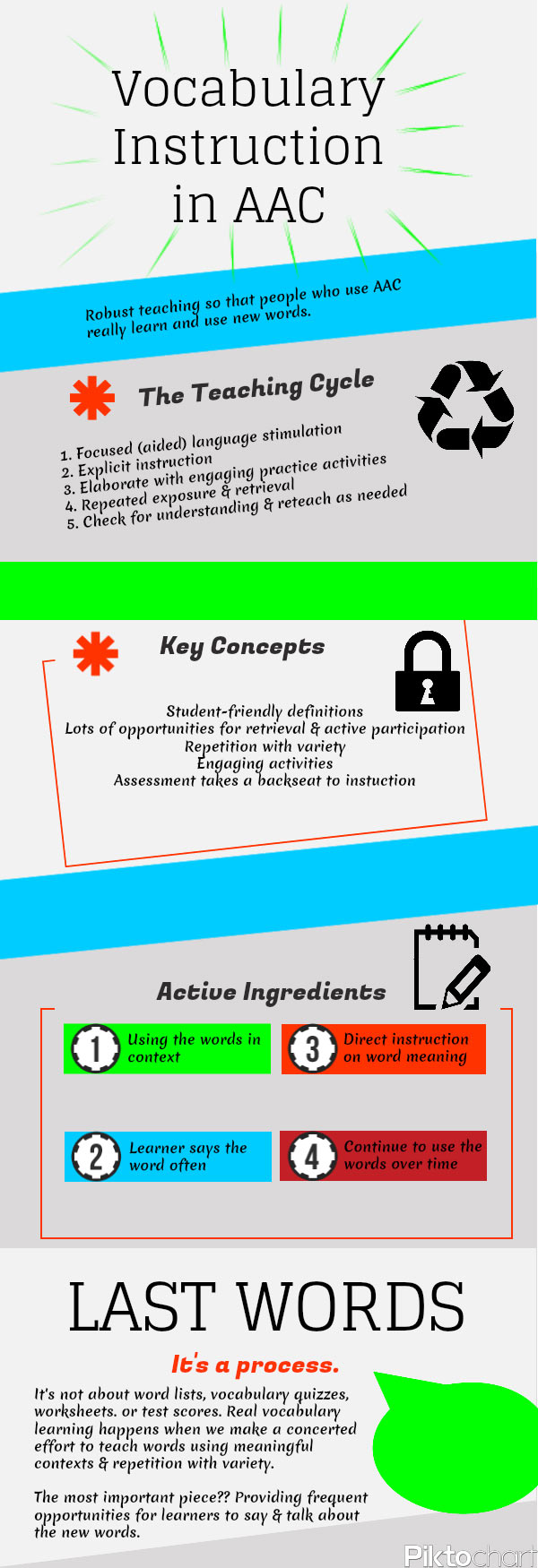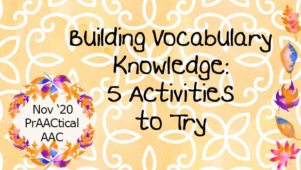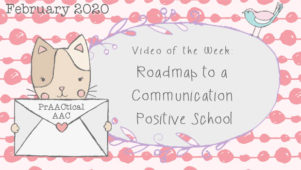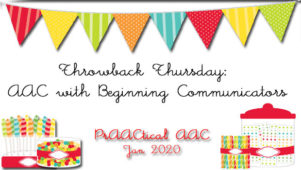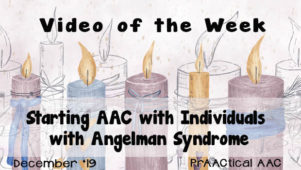Core Words, Direct Vocabulary Instruction, & The Beginning Communicator
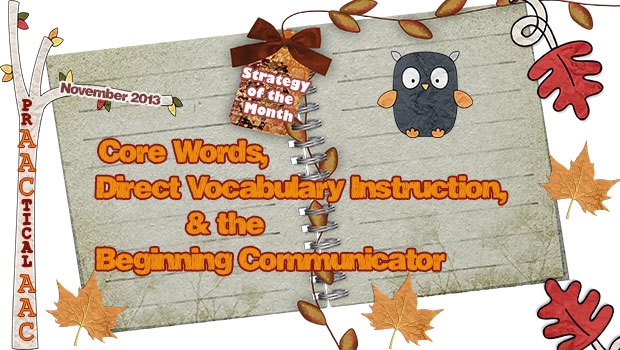
Direct vocabulary instruction is important for all level learners. The beginning communicator needs to learn core word vocabulary from USING the words and one of the best ways to learn how to USE core words, is to receive specific direct instruction with many opportunities for active participation.
6 Essential Philosophies & Strategies
- Vocabulary instruction involves a systematic TEACHING process. Add vocabulary or Words as an activity on the daily schedule and then have a mini-schedule for the specific vocabulary instruction activities for that day. Initially, apply an errorless learning paradigm. Then, gradually, add comprehension checks, but do not wait for ‘proof’ of comprehension before adding new words because we often notice that the beginning communicator will demonstrate comprehension during ‘unexpected opportunities- or when you are least expecting it. Once learners become familiar with some of the specific vocabulary activities, then have some choice making opportunities as to which ‘word activities’ you will do that day.
- Vocabulary Instruction Is for EVERYONE. There are no pre-requisite skills needed. Presume Competency for Learning & Skills.
- Teach Expressive USE of Vocabulary NOT Receptive Identification. Create many opportunities for the learner to USE the target core vocabulary. The beginning communicator must have hundreds (if not thousands) of opportunities to request and comment using the target words. Receptive identification tasks should be introduced only after lots of teaching and then gradually in meaningful language experiences not in isolated drill. PrAACticing USING target words on speech generating devices as well as with no-tech supports is also an important part of learning.
- Vocabulary Instruction Involves ALL modalities of Language. Remember to create and use activities for direct vocabulary instruction that incorporate reading, writing, listening, & talking.
- Vocabulary Instruction Must Incorporate Many Many Opportunities for Active Participation. In this context, active participation means multi-sensory active participation. Learners should move, feel, touch, activate, see, hear, and overall experience the vocabulary.
- Use Focused Language Stimulation- Focused language stimulation (Dickinson, Cote, & Smith, 1993) is a strategy used to highlight new words by using them over and over in discourse and instructional exchanges. Anyone watching a session where focused language stimulation is used by the facilitator should immediately know the target vocabulary because it is being modeled so many times on the AAC system. Also though, there are multiple OBVIOUS opportunities for the learner to also USE the words.
- Use a Variety of Language Facilitation Strategies (Aided Language Input, Scaffolding, Recasting, Repetition with Variety, etc.).
6 Activities of Core Word Vocabulary Instruction for the Beginning Communicator
- Choose Words of the Week or Month. Core words can be chosen based on a pre-determined curriculum from school or through a wall chart or core words of the year. Read books that include words of the week. Highlight or sticky note ‘target words’.
- Use a Word Wall. Have learners add pictures, objects, remnants, text, etc. that define, categorize, or semantically relate to the target words. Use photos of learners engaged in meaningful language experiences and the target core words. For example, if the class made a big dirt pile and the target word was “more” as each learner added “more” to the pile, take pictures of each child adding the dirt. Then put those pictures under the word “more” on the word wall, or put a few small plastic bags of dirt on the word wall. Just remember to put pictures or remnants of multiple ways “more” was used (e.g., with the dirt, with snack items, with “more” balls, etc.
- Create Word of the Week/Month Books or Boxes. These can be tangible books, boxes, folders with pockets, talking power point books, talking photo albums, etc. Books and boxes are great for working on core words in a commenting communication function. For example, if “like” is the core target word, learners can help collect things they “like” for one book and things they do not “like” for another book.
- Create some super fun ways of interacting with the words. Anything goes here- go outside and have a word SHOUT OUT or Talk Like A Pirate. If learner is using an AAC device , turn up the volume or get an amplifier. Learners love the absurd.
- Create Word Recipes. This can be done a variety of ways. Words Recipes can help a learner put together a sentence by adding ingredients (words/or word symbols) to form a sentence that has meaning that ends with eating real food. Word Recipes can also be a traditional recipe which highlights the target word in some way. For example, if the Words of the Week had a theme of ‘Friends’, the food recipe could be ‘friendship’ cookies with specific friendship words written on each cookie, or each cookie could have a single letter and when they are put together it would spell the target words. As parts of the words are ‘eaten’, model or have the learners say the new way the word sounds.
- Play Word Dress Up. Wear word hats, necklaces, bracelets, gloves, capes, etc. Then go around the room, house, school and find fun ways to USE the words appropriately. If the target core word is “favorite”, learners can choose their dress up item based on favorite and then touch, fly, show “favorite” things when they arrive to a place that has the “favorite” things.
Filed under: Strategy of the Month
Tagged With: beginning communicator, vocabulary instruction
This post was written by Robin Parker
